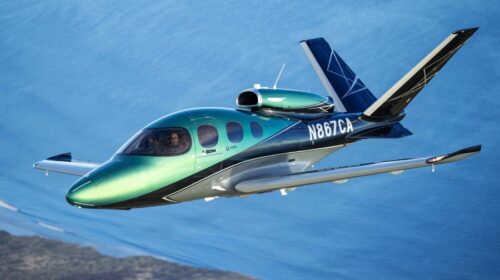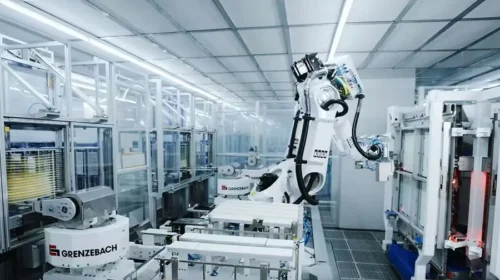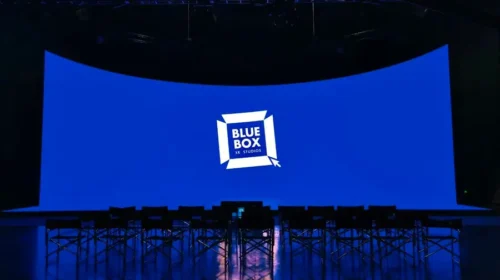Bosideng chases Canada Goose with flight to high-end

The outerwear maker has weathered the slow summer season, reporting double-digit revenue and profit growth for the six months through September
Key Takeaways:
- Bosideng’s profit grew over 20% during the six months to September, while its revenue rose 17.8%
- Despite the solid results, the outerwear maker’s inventory and accounts receivable also rose sharply during the period
By Lau Chi Hang
China’s economy may be feeling some chills these days, plagued by slowing growth that’s dampening consumption and leading to cutthroat competition in many consumer sectors. Despite that, leading down apparel maker Bosideng International Holdings Ltd. (3998.HK) managed to stay warm over the summer with financial results that look quite solid in such an uncertain climate.
The company’s revenue for the six months through September rose 17.8% to 8.8 billion yuan ($1.21 billion), while its profit flew ahead by an even faster 23% to 1.13 billion yuan, according to its interim report released late last month. Bosideng’s ability to grow in such a chilly retail market has everything to do with an important decision the company made in 2018.
That key pivot saw it shifting focus from the mass market to the high-end, chasing the popular Canada Goose (GOOS.US) brand that has found a comfortable niche in China selling pricey down coats, vests and jackets costing hundreds or even thousands of dollars. In making the shift, Bosideng is trying to distance itself from Chinese clothing long known for its poor design and low quality, only offering low prices to compete with foreign brands.
Ugly duckling grows up
Despite their spotty performance in earlier times, domestic garment companies are slowly realizing the importance of changing their cheap image to cater to China’s growing and increasingly sophisticated middle class. As a leading domestic down jacket and coat maker, Bosideng is also aware of the need to go upscale and look better to sync with the times.
Hailing from city of Changshu in East China’s Jiangsu province, Bosideng founder Gao Dekang got into garment manufacturing in 1976 by organizing a small textile group from local farmers using just a few sewing machines. In 1992 he launched his own Bosideng brand, which rose from its humble beginnings to become China’s leading down apparel maker.
After taking his company public in Hong Kong in 2007, Gao tried to diversify his business beyond his highly seasonal down apparel products, investing in a wide range of manufacturing. But the shift never took off, and he ultimately returned to refocus on his original down roots.
As he returned to his origins, Gao decided to differentiate himself from the flock by making Bosideng into a high-end brand. The company started to splurge on endorsements from top celebrities, hiring the likes of skiing sensation Eileen Gu as spokespeople. It also got its products into top international fashion events in cities like Paris and Milan, where Gao also made frequent personal appearances to position him and his company as trendsetters.
Back at Bosideng’s workshops, Gao also made great efforts to improve the designs and technology behind his products. Bosideng currently advertises its clothes as sun- and cold-proof, lightweight, environmentally friendly and more, hoping to give consumers the impression of a trendy and superior brand.
Awkward position
Some have criticized Bosideng’s high-end strategy that puts the brand in an awkward position of downplaying its lower-end roots before becoming a truly trendy name. E-commerce platforms show that the sales of Bosideng products priced over 10,000 yuan, or about $1,375, are very bleak. Down jackets costing 3,000 to 5,000 yuan also show sales of a few hundred pieces monthly. Only products priced around 1,000 yuan are best-sellers.
That seems to show that despite its best efforts, Bosideng has yet to reach the heights – or prices – attained by Canada Goose. Making matters worse, it could be mortgaging its place at the lower end of the market that was once its mainstay. The similar, more affordable Yaya brand may be seizing on that opportunity, grabbing share from Bosideng at that end of the market.
But things can’t be all that bad, as some critics claim, since Bosideng’s revenue and profit have continued to rise over the past few years.
Critics may simply fail to understand the brilliance behind Gao’s upmarket move. It’s undeniably far more difficult to sell a down jacket costing more than 10,000 yuan when there are others costing just a few hundred. But the strategy has allowed Bosideng to put aside its low-end image, enhancing the brand’s value. Wearing Bosideng is no longer for the workaday stiff, but instead can show off a wearer’s status as someone with extra money to spend.
While Bosideng’s high-priced down jackets sales aren’t large, its lower-priced products are exceptionally hot. The logic is simple. When consumers think of a brand as high-end, they are more willing to buy its more affordable products even if they can’t purchase its priciest ones. After all, an affordable down jacket branded as Bosideng can somehow make its owner feel more fashionable despite its lower price tag.
By seizing on this marketing approach, Bosideng has managed to keep its sales growing. And let’s not forget that even its low-priced products are still 30% to 40% higher than comparable products from its rival’s, helping to boost the company’s margins and profits.
Financial distress signs
While the new strategy appears to be bearing some fruit, Bosideng’s latest financial report also contains some worrying signs. The company’s inventory stood at 3.2 billion yuan at the end of March but had risen 85% to 5.93 billion yuan just six months later. Its accounts receivable also tripled from nearly 1.5 billion yuan to 4.55 billion yuan over the period.
At the same time, its cash tumbled from 6.2 billion yuan at the end of March to just 1.96 billion yuan over the same period, down by roughly two thirds in just six months.
In another worrisome sign, Gao sold 400 million of his shares for HK$4.31 each in July, pocketing HK$1.7 billion in proceeds. Such a sale can’t help but make investors worry that this key major shareholder may have doubts about the company’s prospects, or that he believes the share price has peaked for now.
Growing consumer caution is another concern that that has yet to show up clearly in Bosideng’s latest results. But if China’s retail downturn continues, it’s hard to imagine the company’s products won’t eventually be dragged down with it. Bosideng has raised the average tag price of its down apparel to more than 1,000 yuan in recent years, but consumers may have reservations about such relatively high prices in tough times.
The company’s share price is down more than 20% since peaking in October and fell nearly 4% the day after it announced its interim results late last month. That could show that despite its ability to weather China’s increasingly chilly retail environment, investors are growing more cautious about the company.
To subscribe to Bamboo Works weekly free newsletter, click here






